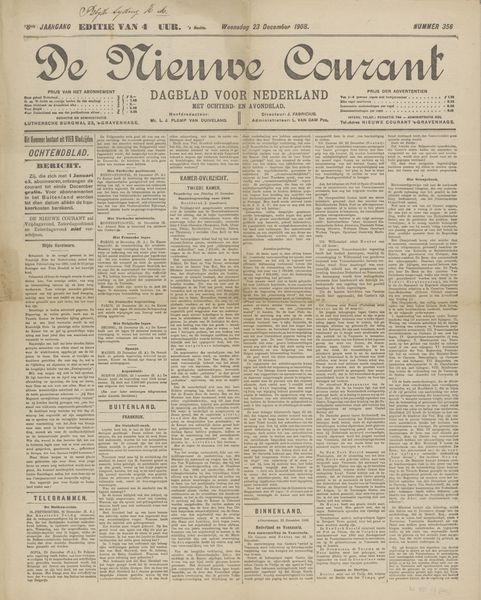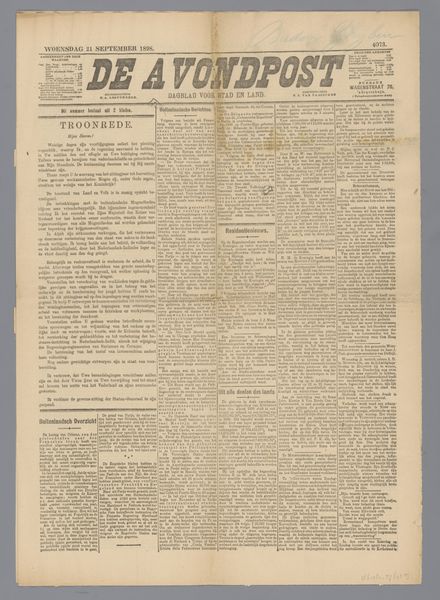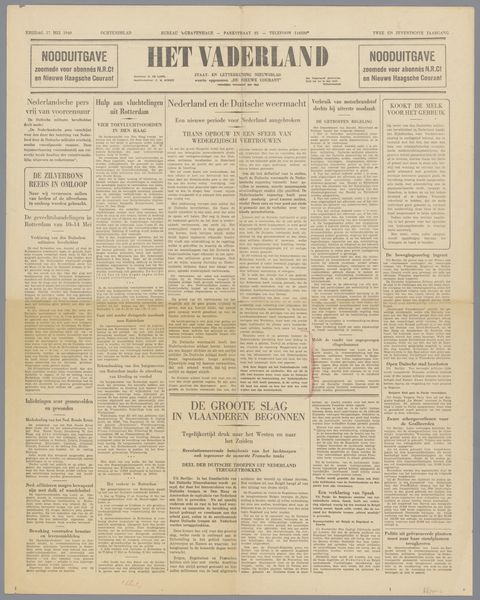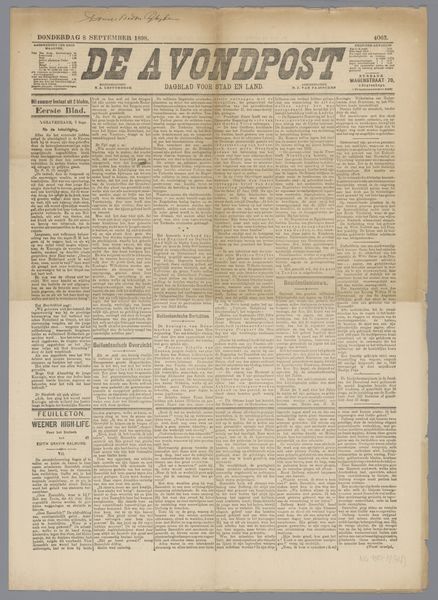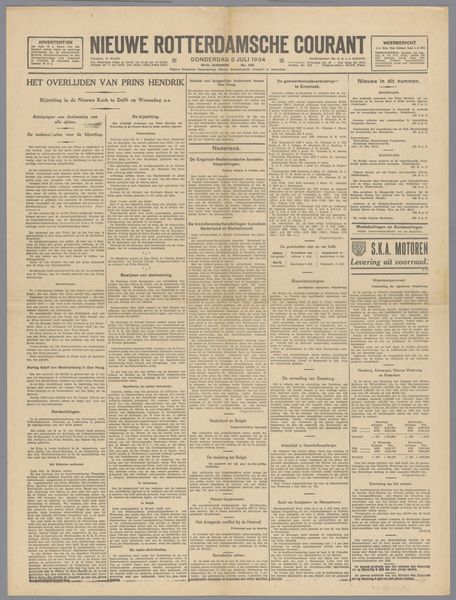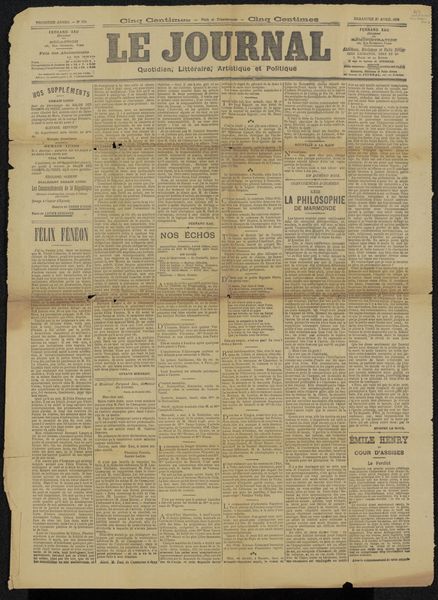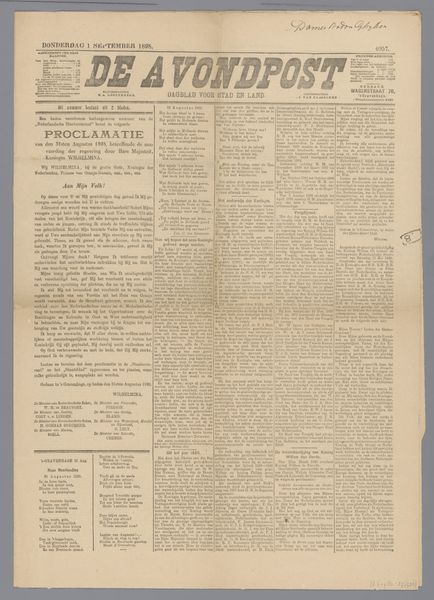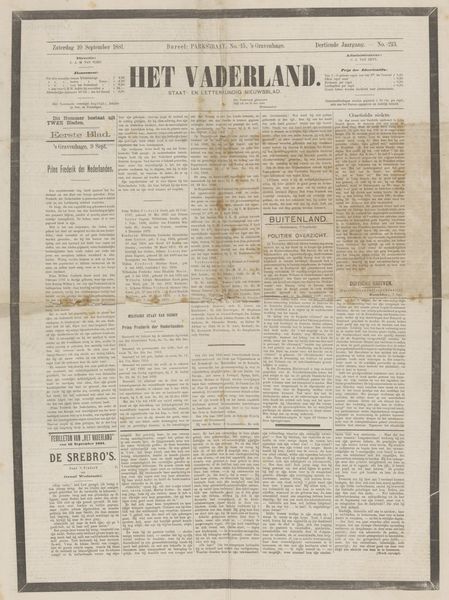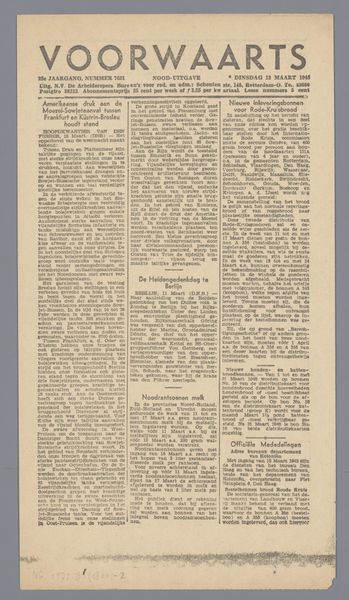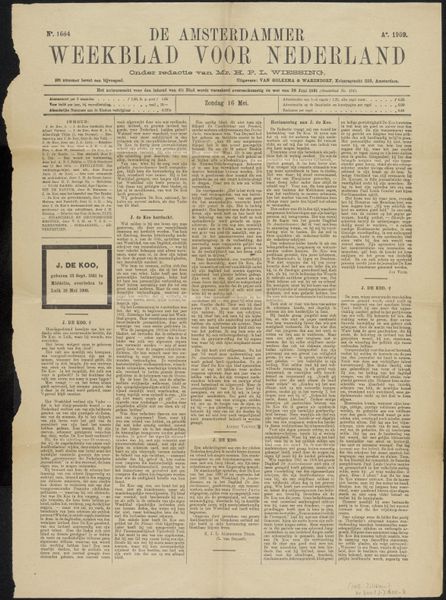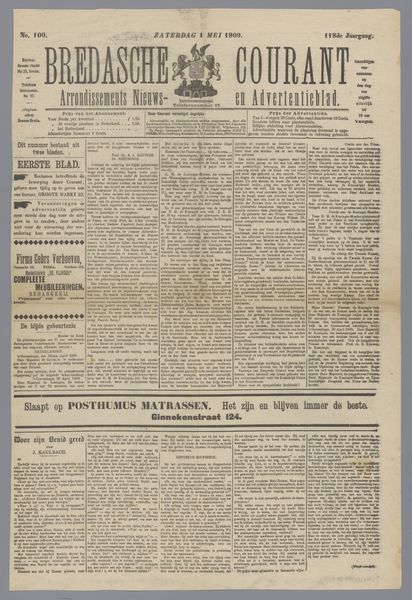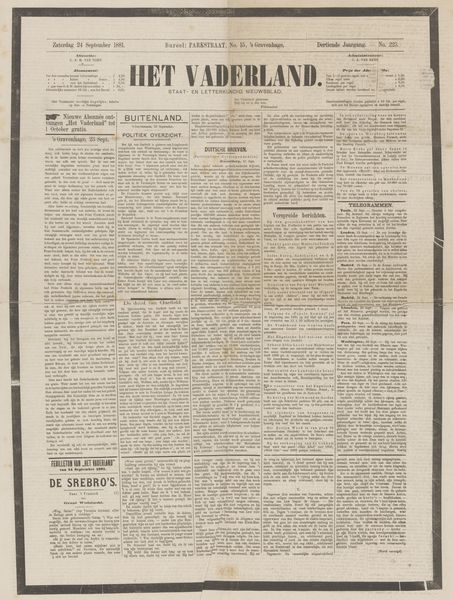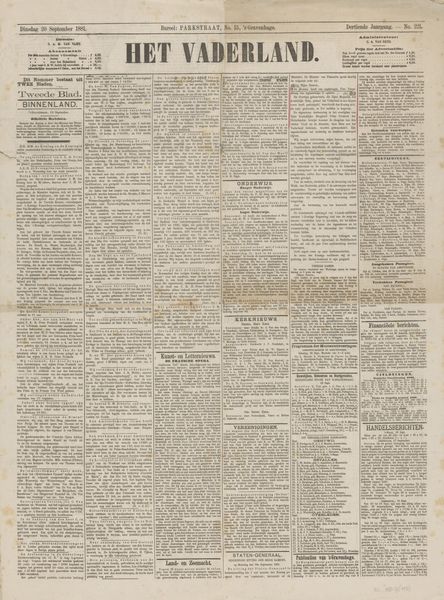
print, textile, typography
#
script typeface
#
type repetition
#
aged paper
# print
#
textile
#
typography
#
fading type
#
stylized text
#
thick font
#
handwritten font
#
golden font
#
historical font
#
columned text
Dimensions: height 58.7 cm, width 47 cm
Copyright: Rijks Museum: Open Domain
Editor: So, this is "De Nieuwe Courant," a newspaper page from possibly 1909. I'm struck by how the typography feels both familiar and distant. The aged paper really amplifies a sense of history. How do you interpret this piece beyond just its function as a newspaper? Curator: Well, looking at "De Nieuwe Courant" through an activist lens pushes us to consider the role of the press in shaping public discourse and, indeed, social realities at the turn of the century. It's not just about relaying information, but about actively constructing narratives. Consider the language used. Is it objective? Who is included, and who is excluded, in the stories told? Editor: That's interesting. I hadn’t thought about the language itself as a kind of construction. Curator: Exactly! Newspapers like this, even with the best intentions, can reflect and reinforce existing power structures. The choices about what news to cover, whose voices to amplify, and even the way stories are framed contribute to the dominant social narrative. This front page gives us insight into the social, economic, and political landscape, and also suggests which readers were being addressed. Consider class, literacy and access to information. What societal role does the title "Courant" suggest for the intended audience? Editor: I see what you mean. Thinking about the paper in its historical context makes me wonder who had access to this information and what impact it had on their understanding of the world. Thanks for sharing your perspective. Curator: And thank you for posing such perceptive questions. Exploring art through this lens reveals not only aesthetic qualities but also its potential for impacting social change.
Comments
No comments
Be the first to comment and join the conversation on the ultimate creative platform.
